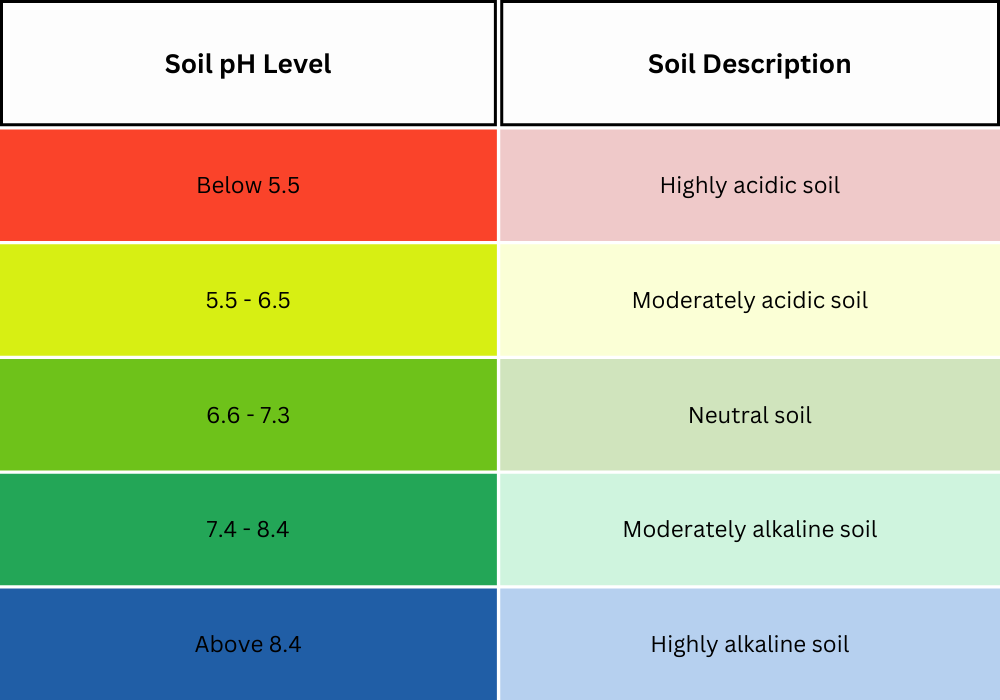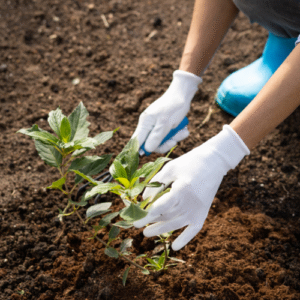To maintain a vibrant and healthy yard in Brisbane, it’s crucial to avoid common fertiliser mistakes that can hinder its growth and harm the environment. Proper fertiliser application is essential for providing the necessary nutrients while minimising waste and environmental impact. In this article, we will explore the dos and don’ts of fertiliser application specifically tailored to Brisbane’s unique environment.

Dos:
1. Understanding Your Yard’s Nutritional Needs
Understanding your Brisbane yard’s specific requirements is crucial for successful fertiliser application. Conduct a thorough soil test to determine nutrient levels and pH balance. This test provides valuable insights into your soil’s current state, revealing deficiencies or imbalances that hinder optimal growth. By analysing nutrient levels, you can identify specific needs and select appropriate fertilisers.
Maintaining a well-balanced nutrient profile is key for optimal plant health. Choose fertilisers with the right ratios of nitrogen, phosphorus, and potassium to meet your plants’ requirements. Additionally, consider the soil’s pH when selecting fertilisers to ensure an optimal environment for plant growth.
Here is a soil pH balance table as your guide:

Brisbane’s soil pH levels can vary depending on the location and specific soil composition. In general, the region tends to have slightly acidic to neutral soils. However, it’s important to note that soil pH can vary within Brisbane, so conducting a soil test specific to your yard is recommended to accurately determine your soil’s pH level. This will help you select the right plants and make any necessary adjustments to create an optimal growing environment for your garden.
For professional guidance and assistance, don’t hesitate to seek the help of us at, Yard Space Innovations. We have the expertise and knowledge to assess your yard’s needs, recommend suitable fertilisers, and provide valuable insights on application techniques. In addition we can offer tailored solutions to address specific challenges and ensure your Brisbane yard thrives with vibrant and healthy plants.
2. Choose the Right Fertilisers
When selecting fertilisers, prioritise those specifically formulated for the local climate and soil conditions. Look for products that offer a balanced nutrition approach, providing the necessary nutrients in appropriate ratios to support healthy yard growth. Consider organic and environmentally-friendly options to minimise the impact on the ecosystem.
For optimal results, consult with Yard Space Innovations for guidance on the best fertilisers for your specific needs. We have in-depth knowledge of Brisbane’s unique environment and can recommend fertilisers that align with sustainable gardening practices. Helping you select fertilisers that promote healthy growth while minimising environmental impact.
It is also best to choose organic options derived from natural sources, as they release nutrients slowly and reduce the risk of runoff and leaching. Additionally, look for fertilisers labelled as environmentally-friendly or low in environmental impact. These products are designed to minimise pollution and use controlled-release nutrients, ensuring gradual and sustained nourishment for your plants.
3. Follow Fertiliser Labels
 Achieving optimal results with fertiliser application requires careful attention to the instructions provided on the labels. These instructions offer valuable guidance on application rates, timing, and watering requirements. Adhering to the recommended guidelines ensures the proper release and absorption of nutrients by your plants.
Achieving optimal results with fertiliser application requires careful attention to the instructions provided on the labels. These instructions offer valuable guidance on application rates, timing, and watering requirements. Adhering to the recommended guidelines ensures the proper release and absorption of nutrients by your plants.
By following the suggested application rates, you can provide your yard with the right amount of nutrients without risking over-fertilisation. Over-fertilisation not only wastes resources but can also harm your plants and contribute to environmental pollution. Timing is also crucial, as applying fertilisers at the appropriate time allows for maximum nutrient uptake by the plants.
Don’ts
1. Avoid Excessive Fertiliser Application
Over-fertilising your yard can have detrimental effects on both the health of your yard and the surrounding environment. Excess nutrients, such as nitrogen and phosphorus, can leach into waterways through runoff or infiltration, leading to water pollution and negative impacts on aquatic ecosystems. These excessive nutrients can promote the growth of harmful algae, deplete oxygen levels in water bodies, and disrupt the delicate balance of aquatic life.
By being mindful of the impact of over-fertilisation and following recommended guidelines, you can contribute to a greener and more sustainable environment for Brisbane and its surrounding areas.
2. Don’t Apply Fertilisers Before Heavy Rain
 Applying fertilisers just before heavy rain can have negative consequences for both your yard and the environment. When rainfall occurs immediately after fertiliser application, the excess nutrients may be washed away before they have a chance to be absorbed by the plants. This not only wastes valuable resources but can also result in nutrient runoff, which can pollute nearby water sources.
Applying fertilisers just before heavy rain can have negative consequences for both your yard and the environment. When rainfall occurs immediately after fertiliser application, the excess nutrients may be washed away before they have a chance to be absorbed by the plants. This not only wastes valuable resources but can also result in nutrient runoff, which can pollute nearby water sources.
By planning your fertiliser application according to the weather forecast, you allow for optimal nutrient absorption by the plants while reducing the potential for water pollution. Being mindful of weather conditions and adjusting your fertiliser application schedule accordingly demonstrates responsible yard care practices that promote sustainability and protect water sources in the Brisbane area.
3. Minimise Fertiliser Waste
It is important to be mindful of where you spread fertilisers and avoid applying them to non-vegetated areas, hardscapes, or impervious surfaces. These areas are not equipped to absorb or utilise the nutrients, and as a result, any fertilisers applied there are more likely to be washed away by rainfall or irrigation. This can lead to unnecessary runoff, causing environmental contamination and wasting valuable resources.
By focusing on targeted application techniques, you can ensure that the fertilisers are applied only to the areas where plants can efficiently utilise them. This includes directing the fertiliser towards the root zones of plants, where it can be easily absorbed and utilised for growth. Techniques such as spot application or using tools like spreaders can help you apply the fertiliser precisely and avoid spreading it onto non-vegetated or impervious surfaces.
